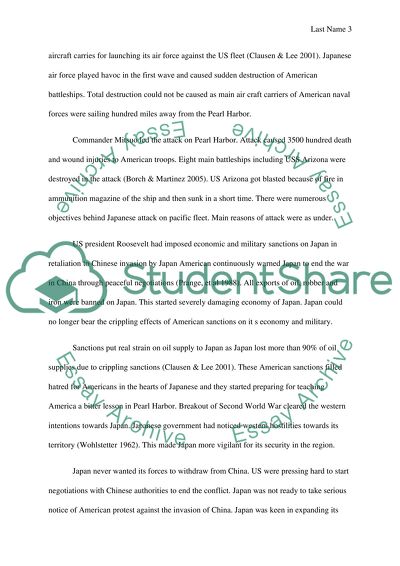Cite this document
(“Japanese Attacks on Pearl Harbor Essay Example | Topics and Well Written Essays - 1500 words”, n.d.)
Retrieved from https://studentshare.org/history/1418021-japanese-attacks-on-pearl-harbor
Retrieved from https://studentshare.org/history/1418021-japanese-attacks-on-pearl-harbor
(Japanese Attacks on Pearl Harbor Essay Example | Topics and Well Written Essays - 1500 Words)
https://studentshare.org/history/1418021-japanese-attacks-on-pearl-harbor.
https://studentshare.org/history/1418021-japanese-attacks-on-pearl-harbor.
“Japanese Attacks on Pearl Harbor Essay Example | Topics and Well Written Essays - 1500 Words”, n.d. https://studentshare.org/history/1418021-japanese-attacks-on-pearl-harbor.


